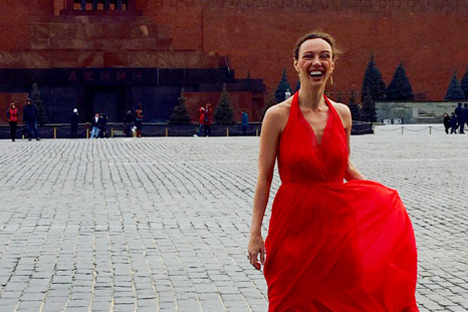
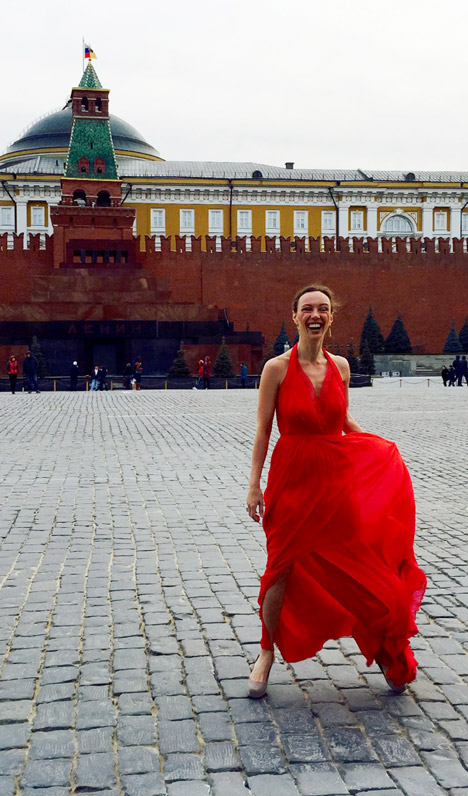
Aleksandra Efimova in Moscow. Source: Personal archive
During my recent visit to Russia, I attended the fashion show at the Mercedes-Benz Fashion Week in Moscow. From my front-row seat, I admired the outstanding talent of a wealth of Russian designers. Captured by the procession of bright colors and exquisite designs, I wondered about the inspiration behind each piece, and how that inspiration might reflect the Russianness of its creator.
Russian couture is considered to be a very new phenomenon. “Russia’s fashion scene is little more than 20 years old, yet it’s already flourishing,” wrote Anastasiia Fedorova in “Sartorial-east: 24 Russian fashion designers to watch” in The Calvert Journal last year.
Since the beginning of the post-Soviet era, Russian couture has made its way onto the world’s top runways, bringing highly welcome, uniquely Russian sophistication and tradition to the fashion scene. While it’s true that it took the end of the Soviet era to bring Russian couture to life, designers with Russian roots have been favorites for much longer than we might realize.
For example, Leon Max-Max Studio is known for its elegance and modernity, with stores all over the world. Not everyone knows that the brand was founded in 1979 by Leonid Maxovich Rodovinski, a native of St. Petersburg, my own city of birth. Gabrielle “Coco” Chanel wasn’t Russian but her legendary perfume Chanel No. 5 was created by Russian-French chemist and perfumer Ernest Beaux, born in Moscow.
Oleg Cassini was born in Paris, used his mother’s Italian surname professionally, began his career in Italy and flourished in the United States. His first name clearly reveals his Russian roots, however. His father and grandfather were Russian aristocrats and diplomats, and Oleg Cassini Loiewski spent part of his childhood in pre-revolutionary Russia. Were Cassini’s designs, for clients including Paramount Pictures and First Lady Jacqueline Kennedy, influenced by his Russian roots?
I took a closer look at today’s Russian designers, asking myself what might be noticeably Russian about their work. I’m often asked to describe various aspects of Russianness, such as Russian food, architecture or climate. In a country of such geographical and cultural diversity, of course it’s hard to pin down one description for any of these. Russian fashion is likely to reflect similar diversity, but I’ve found that it is possible to see elements of Russian tradition in the work of many Russian designers.
Traditional Russian fashion elements are featured quite overtly by many current designers. Asiya Bareeva’s signature piece is a flower-leaf headdress of Japanese clay, based on the kokoshnik, a Russian traditional headdress. Some of Ulyana Sergeenko’s ensembles are also completed by kokoshniki, with elegant designs inspired by wheat and berries.
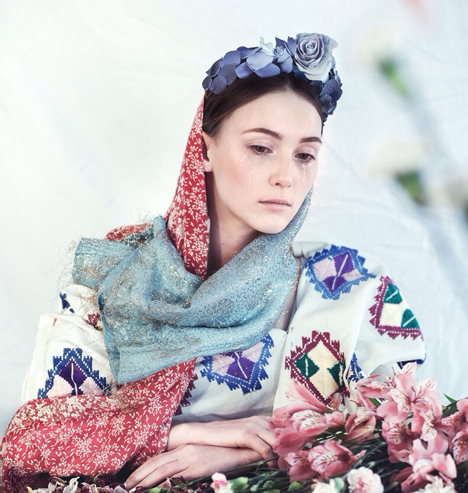
Asiya Bareeva’s collection. Source: Press Photo
It’s impossible not to think of the charm of the villages and countryside of Russia when looking at Olga Vilshenko’s crisscross stitching and other folkloric design elements. I love the way she has applied inspiration from traditional Russian crafts to the modern lines of her designs.
Lesia Paramonova’s inspiration, meanwhile, is the forest, and her forest is clearly a Russian one. Looking at her fabrics, with their patterns of mushrooms, leaves and wildlife, I can imagine walking through the woods of my childhood, smelling the trees and hearing the birds sing.
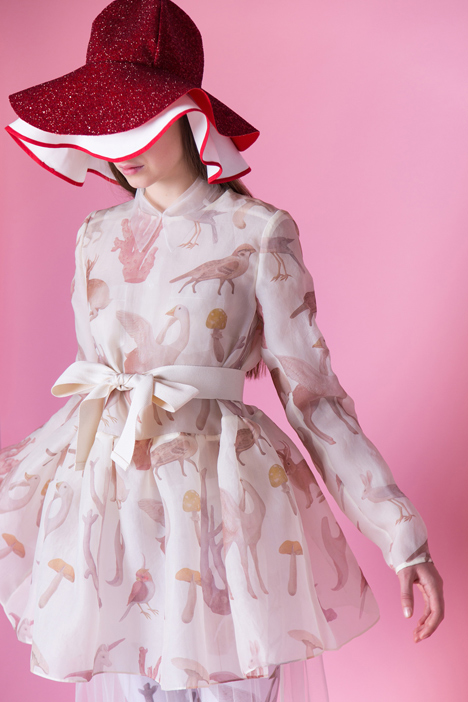
Lesia Paramonova’s collection. Source: Press Photo
Paramonova draws a direct connection between her designs and her Russianness. Her brand name, Les’, is a play on her own first name and the Russian word for “forest.” About the creation of her 2013-2014 collection, she wrote, “I have imagined the teenage girl from the Soviet past, with bows (and) stockings and in a traditional school uniform. It is nostalgia…passed through a prism of modern perception.”
Some evocations are subtler, but no less noteworthy. Dasha Gauser’s works highlight lace patterns that remind me inevitably of the intricate ironwork of the bridges of St. Petersburg. Igor Chapurin, who has also featured kokoshnik headdresses, has invented new embellished embroidery techniques and “Russian straw,” cloth woven with gold.
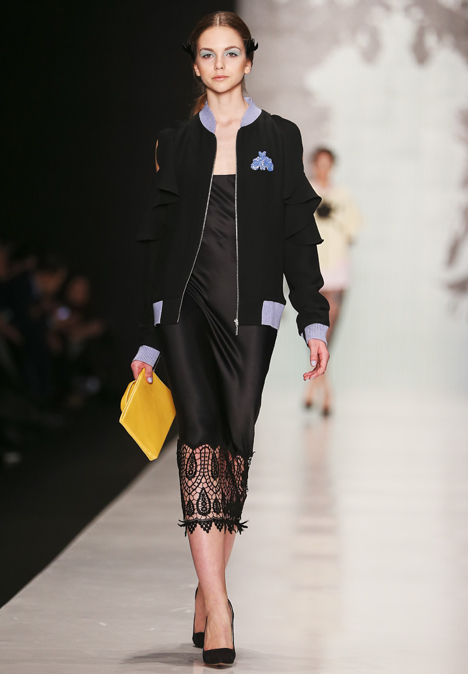
Dasha Gauser’s collection. Source: Press Photo
Other designers evoke Russia’s classical ballet and the white nights of the north. Valentin Yudashkin, a pioneer of modern Russian couture, drew from Tchaikovsky’s Swan Lake for his bridal collections. Looking at his designs, you expect that any minute the models might fly off the runway!
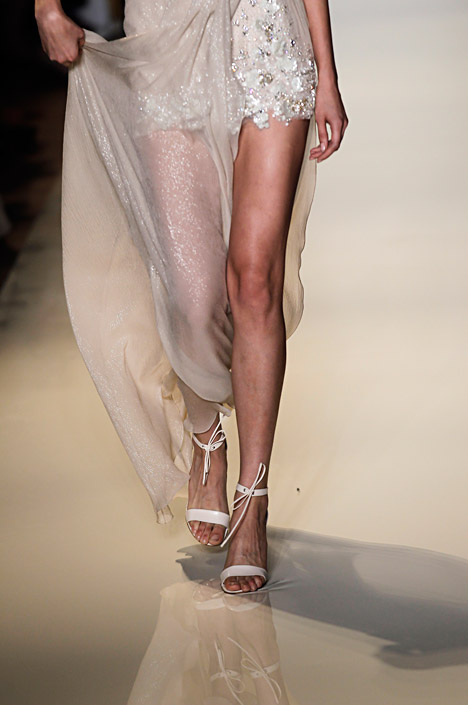
Valentin Yudashkin's collection. Source: AP
Alice and Julia Ruban showcased tutu-like fitted corsets paired with delicate lace in Ruban Couture’s spring-summer 2014 collection.
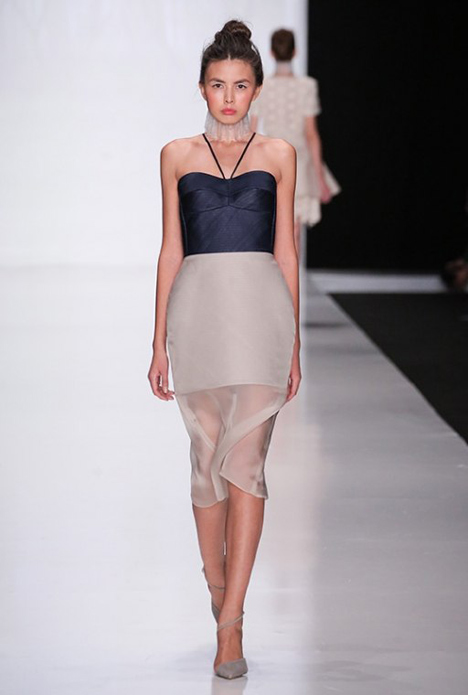
Ruban Couture’s spring-summer 2014 collection. Source: Press Photo
This combination of soft and hard, with white lace and deep-blue satin, brings to mind White Nights over the Neva River.
Furs have always been part of the Russian wardrobe, with a long tradition that certainly began for reasons of practicality: staying warm in a cold climate. Helen Yarmak, whose luxurious, museum-worthy pieces are worn by celebrities including Lady Gaga and Jennifer Lopez and have been featured in many films and television shows, describes furs as part of “Russian national pride.”
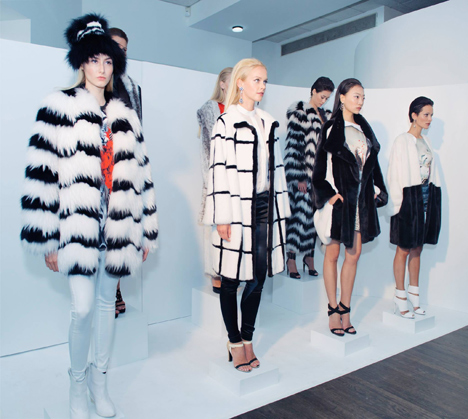
Helen Yarmak's collection. Source: Press Photo
According to her website, CBS Corporation has called Yarmak’s brand “the first Russian fashion embassy in America.”
Furs have shown up in Ulyana Sergeenko’s work, too, including an ultra-chic fur skirt that epitomizes extreme luxury, boldness and out-of-the-box creativity – could this designer be anything but Russian?
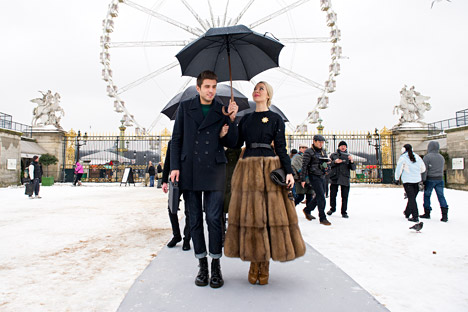
Ulyana Sergeenko in her fur skirt. Source: EPA / Vostok Photo
In a feature titled “The Red Queen: Ulyana Sergeenko,” Harper’s Bazaar magazine called Sergeenko “part of the new wave of beautiful, super-stylish Russians omnipresent on the fashion scene.” According to Condé Nast’s Style.com (“Spring 2015 Couture: Ulyana Sergeenko”), “Sergeenko likes to reference specific eras of Russian history. She's an ambassador not just for her country but also for its traditions, employing upward of 100 people whose handwork is often native to the region.”
Throughout Sergeenko’s collections, she transports us to the magic and classicism of imperial Russia, albeit with a modern finish. Her feminine silhouettes, luxurious fabric and intricate design details may be only subtly Russian, but it is easy to envision her models striding through the ornate palaces of St. Petersburg.
Russian artists have also made a notably Russian mark in jewelry and decorative arts. The exquisitely intricate designs of Fabergé eggs, timepieces and jewelry have been highly prized worldwide for almost a century. Today, Alena Gorchakova’s rings evoke Russia’s onion domes (and her cufflinks’ two-headed eagle and diamonds would carry strength and focus to any board meeting!).

A ring by Alena Gorchakova. Source: Press Photo
What is Russian fashion today and what makes it Russian? I see Russian fashion as chic, creative and elegant, reflecting the inspiration of the Russian land and its people, from the romance of St. Petersburg’s bridges and palaces to the wild splendor of the Siberian forests and the warmth of folklore and crafts throughout the country.
All rights reserved by Rossiyskaya Gazeta.
Subscribe
to our newsletter!
Get the week's best stories straight to your inbox